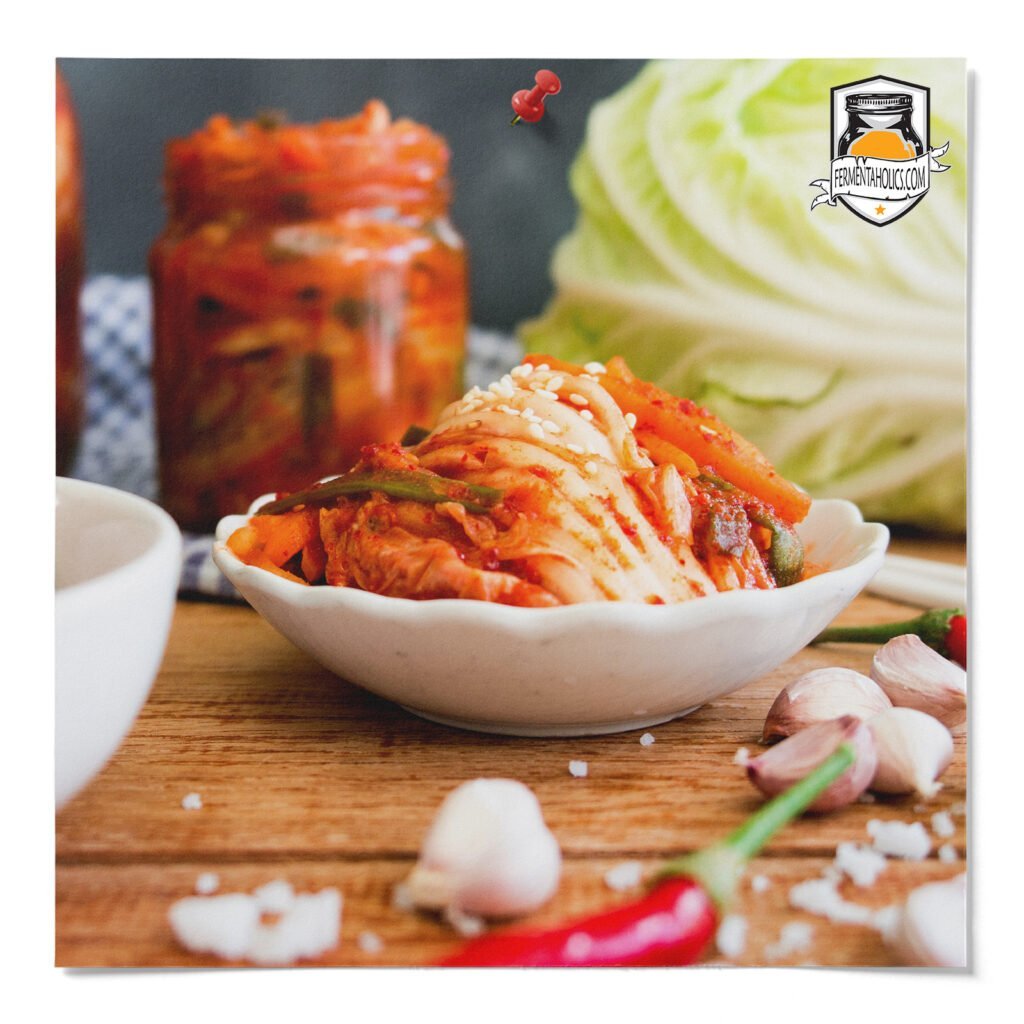

Kimchi is a traditional, slightly spicy Korean sauerkraut made from lacto-fermented vegetables like napa cabbage, daikon radish, carrots, garlic, ginger, and Korean chili (gochugaru). It is served with almost every meal in Korea as both a side dish and a condiment, making it a Korean staple. The complex flavors, acidity, and spiciness of kimchi can enhance even the dullest of dishes and bring them to life. Additionally, lacto-fermentation helps preserve the vegetables, preserving shelf life. It’s important to note that while kimchi can be made with any vegetable, cabbage and daikon radishes are the most common.
Kimchi has a unique and complex acidic flavor and can be challenging to describe. Since kimchi is lacto-fermented, the fermentation process adds a softness to the crunchy vegetables, leaving their texture similar to a traditional sauerkraut. From there, the softened crunchy texture is backed by the pleasant acidity and subtle spiciness of the gochugaru. Also, through fermentation, the flavors of the herbs and veggies combine to develop kimchi’s robust and bold flavor, ranging from sweet to sour. Some people find kimchi to be an acquired taste similar to bleu cheese, vegemite, or anchovies. If you find yourself in this group, once the taste is acquired, it is hard to stay away.
Gochugaru is a dried Korean chili flake or powder. This is what gives kimchi its slightly smoky and spicy flavor. Gochugaru is also the same pepper used to make gochujang, a spicy Korean chili paste. To make gochugaru, chili peppers are typically dried in the sun and then processed into either powder or flaked form. In addition to the smoky and spicy flavor, these peppers give kimchi its signature red color. The versatility of kimchi ingredients is further showcased by the seemingly endless variations. Combining the chilis with garlic, ginger, and a variety of others herbs – with some recipes calling for fish sauce or seafood – gives kimchi its umami flavor.
Fermented foods like kimchi are both prebiotic and probiotic. As kimchi has gained global recognition, we have found that it is a great source of probiotics, such as lactic acid bacteria, which are linked with many health benefits.
Remember, kimchi is both a condiment and a side, so you don’t have to do anything; eat it right out of the jar. Besides this, there are endless ways to cook with kimchi, and your only limit here is your imagination.
It’s easy; once you know the basics of lacto-fermentation, you just need to gather supplies. Be sure to check out our Complete Wide Mouth Mason Jar Fermentation Kit. This includes everything you need to get four separate ferments going simultaneously, minus recipe ingredients and the mason jars.
💡Now that you have the tools ready, simply follow our recipe: Traditional Napa Kimchi Recipe.
